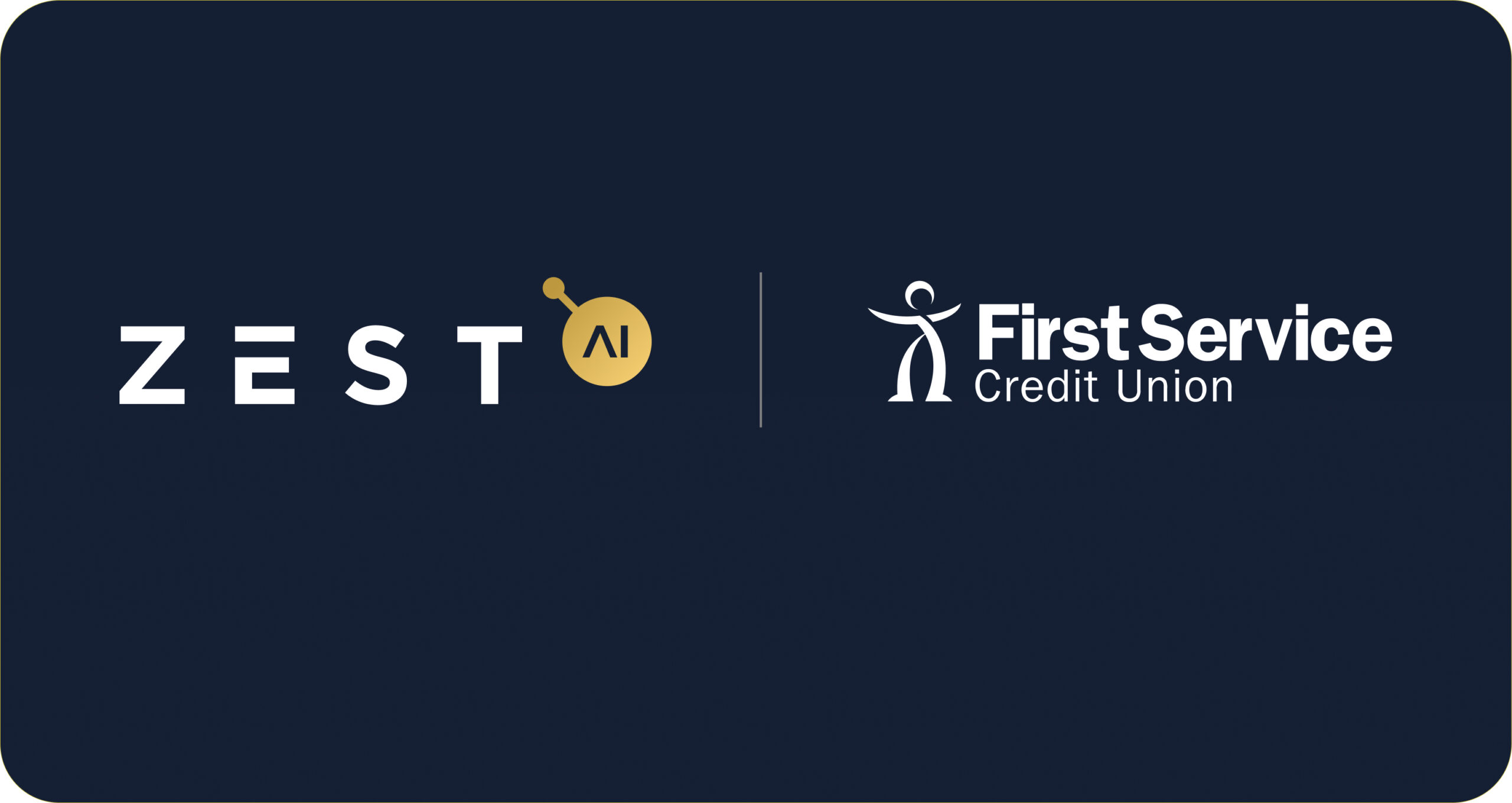Why efficient loan growth is job one at First Service Credit Union

On the job, doing things right
First Service Credit Union is in the business of making loans. When it comes to determining who to lend to, President and CEO David Bleazard understands how important it is to get it right.
“We don’t want to find out we’re saying yes to someone and hurting the credit union as a whole because we didn’t understand the credit or price risks we were taking,” he explained.
Bleazard’s point is well-taken. In deciding whether or not to extend credit, every financial firm faces a fundamental question: “Who makes the cut?”
This question isn’t a new one to be asked. However, the ways in which some credit unions and banks are answering it is.
Change is happening now, and First Service CU is leading the way
Zest AI works with dozens of lenders, particularly mid-sized credit unions like First Service — with assets over $840 million — to shift from industry score-based lending to AI-automated underwriting.
AI-based lending gives lenders access to more data and higher-level math to improve how they spot the high-risk and low-risk borrowers in the bunch. The approach is working.
On average, lenders who’ve made the switch to AI credit decisioning technology like Zest AI’s have seen approval rates rise 25 percent with no increase in risk. Houston-based First Service is no exception, logging similar results in its loan underwriting program’s final-stage testing.
“I’m hoping that, by and large, the age of pricing based on notoriously inaccurate credit scores is over,” Bleazard said. “If I have a better understanding of the risks I’m taking, I can price better — period.”
That could spell significant benefits for First Service and its borrowers, some of whom may have been turned down for a loan in the past.
“Now we’re going to be saying yes to more people we should be approving, and we’re going to be saying no to others we were approving before when we didn’t understand the risk,” Bleazard said. “The practical effect is that loss rates and gross loan yields are going to change, and our net margin is going to improve.”
What does this look like in the market?
Faster loan growth will bring significant relief at a time of record-low interest margins. Lending spiked early in the pandemic when companies and consumers were rapidly drawing down lines of credit, but it has since slowed down every quarter after that, according to the Federal Reserve. What’s more, the latest data from the second quarter of 2021 shows loans and leases at U.S. banks down 0.2 percent.
Credit unions, however, are doing slightly better, though the numbers signal a mixed bag. As of May 2021, loans outstanding grew 1.5 percent year to date. Although that news is positive, the growth still ranks well below the pace of the past four years, and is trailing deposit growth.
According to American Banker, one reason for tepid loan growth is that borrowers have been sitting on the sidelines, partly because they’re having trouble hiring workers and replenishing their inventories. Additionally, businesses and consumers have enjoyed an influx of cash thanks to federal stimulus spending and haven’t sought out loans as much as they had in the past.
The picture is rosier at First Service, which has been posting loan growth every quarter since the beginning of the pandemic, including a 3.7 percent bump up in the second quarter of 2021.
Bleazard isn’t surprised, considering the credit union’s commitment to first-rate service and innovative tech tools. “We’re trying to provide extremely high-touch service while using technology to make ourselves significantly more efficient,” Bleazard said. “You must become more efficient over time so that you can pay less in the offering of financial products and services and your revenue remains solid.”
“The biggest challenge for all financial institutions,” says Bleazard, “is that we’re in a fixed-margin business. It doesn’t matter whether interest rates are 17 percent like they were in the 1970s, or if they’re near zero like today, our margins remain the same. It’s the difference between what we pay to obtain deposits and what we sell a loan for.”
Bleazard believes financial institutions must always strive for efficiency if they hope to remain competitive. That’s where Zest AI comes in.
“Zest AI is a natural fit because it answers the question of how to teach a computer to render a credit decision,” Bleazard said. “A computer doesn’t get up on the wrong side of the bed. It didn’t break up with its girlfriend or boyfriend the day before. They don’t yield to the pressure of sales people.”
Of course, human underwriters will remain an essential part of the lending process — especially around the more complex decisions requiring a high-touch approach. But as for the bulk of credit decisions, a computer is far superior.
Recognizing how and what First Service needs to excel and grow is what Bleazard is focused on, even if it means venturing outside his comfort zone to ensure the credit union embraces the technology and resources necessary to meet the ever-evolving needs of its members.
“I may be a techno-geek, but I’m not an expert in AI, so we’ve got to make sure that we can find the right partner to turn this technology into an effective tool,” he said.

